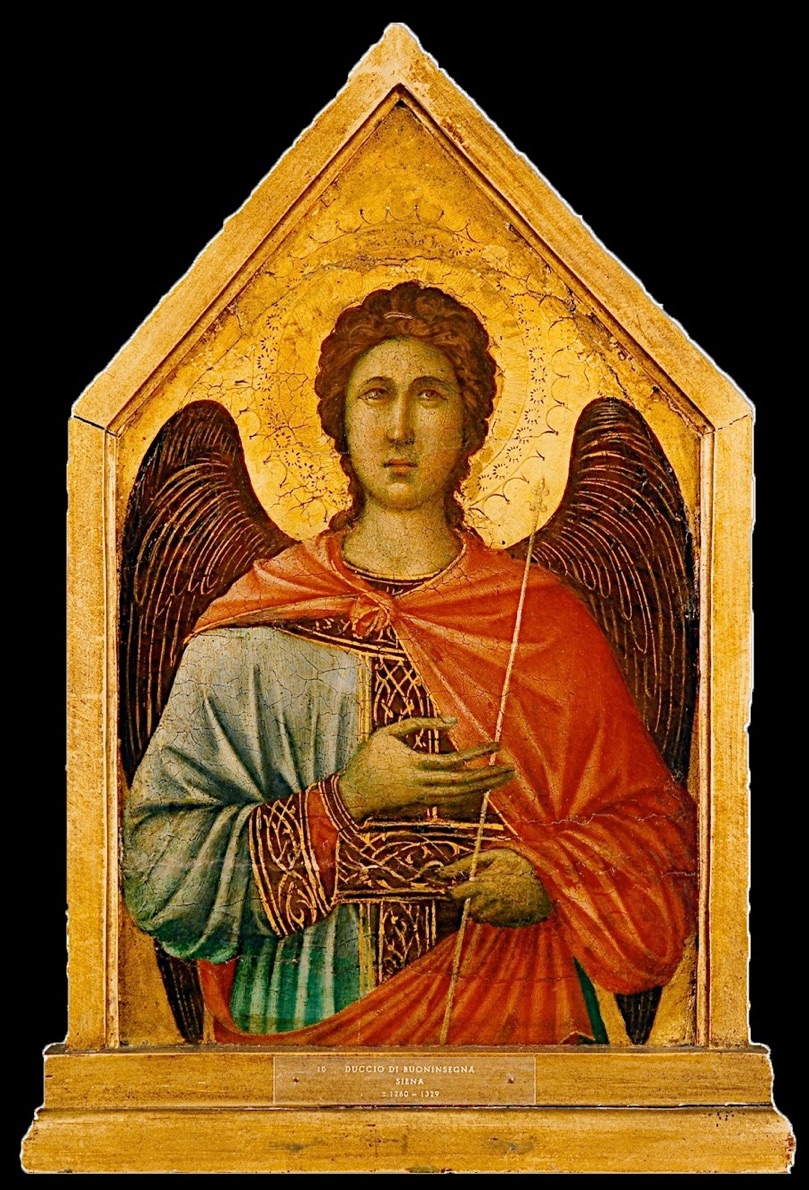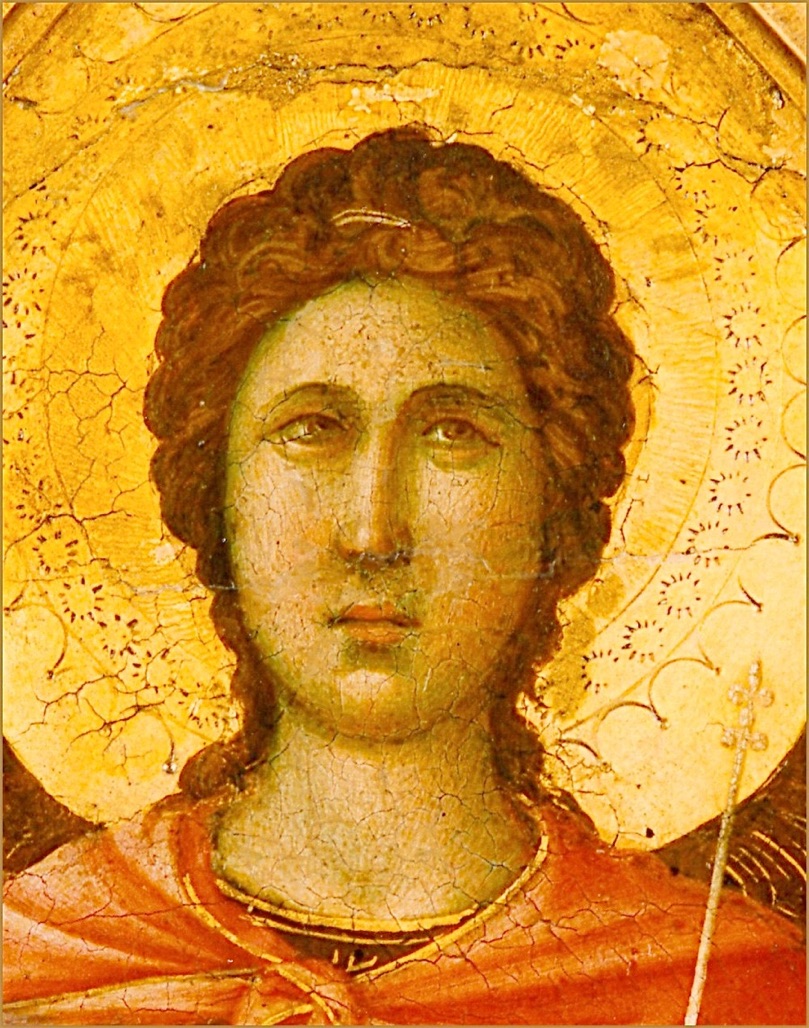The Digitalisation Project Castle Huis Bergh is the intellectual property of the Stichting Musick’s Monument. Ing Hans Meijer was responsible for the technical realisation; Dr Willem Kuiper for the scholarly input. Thanks are also due to the Anjer Cultuurfonds Gelderland; the Stichting de Verenigde Stichtingen “De Armenkorf” in Terborg and “Het Gasthuis te Silvolde”; Mrs P. Tijdink-Hermsen; Mrs L.J.C. Meijer-Kroonder; and the Giese family.




Panel
Duccio di Buoninsegna (ca. 1250-1318)
Italy, Siena
Angel
ca.1310
Around 1300, the Duomo of Siena commissioned the citys great artist, Duccio di Buoninsegna, to paint an altarpiece. The front of this piece, the side facing the brethren gathered in the church, was to be decorated by a large portrait of Mary surrounded by saints. The back of it, the side that would only be seen by the clergymen sitting in the choir of the church a short distance from the altar, was to consist of small panels depicting scenes from the life of Christ.
Duccio had previously done some work for the Duomo, and happily accepted this new assignment. The altarpiece that he painted came to be known as the Maesta. After having stood on the high altar for some time, it was moved to a side chapel, and later to a museum next to the church. At a certain point in time, the front and the back of the altarpiece were separated from each other. The Maesta was further dismantled when the twelve small portraits of angels that crowned the altarpiece (six on the front, six on the back), were sawn off. One of them was sold to Castle Bergh, a second to Mount Holyoak College in Mount Holyoak (United States), and a third to the National Gallery in Philadelphia (United States). None of the others can be located, and they may be lost forever. Above the head of our angel a seam can be seen, which indicates the original size the panel. The Greek word angelos, from which the English word angel derives, means messenger, and in accordance with his function, he carries a messenger’s staff.

